Number of connections
The S7-200 SMART CPU can be connected to Siemens HMI devices that support PPI protocol through the RS485 port or signal board integrated on the body, and can also be connected to Siemens HMI devices that support the S7 protocol through the Ethernet port integrated on the body.
When the three physical interfaces of the CPU are connected to Siemens HMI devices (including signal boards), the maximum number of connection resources is 16.
Table 1. CPU connectivity

PLC supported by Smart Panels:
The first generation SmartLine (without Ethernet interface): S7-200, OMRON CP1 series, Mitsubishi FX series, Modbus RTU Note: Only one communication connection can be established, otherwise Smart Panels cannot start the project (white screen).
The second generation of SmartLine-IE: serial ports: S7-200, OMRON CP1 series, Mitsubishi FX series, Modbus RTU, Delta (DVP-SV / ES2 series) Ethernet: S7-200 (CP243-1), Smart200, LOGO !
Smart Panels can only connect one device through the serial port, and can connect three devices through the Ethernet, but the serial port and Ethernet cannot be used at the same time (compilation fails).
Note: Only one serial port and Ethernet port can be used, otherwise the compilation will fail.
Create project
Users need to use WinCC Flexible 2008 SP2 China or above to configure the first-generation product SmartLine. If it is the second-generation product SmartLine IE, they can only use WinCC Flexible 2008 SP4 China for configuration.
Users can either create projects directly in WinCC Flexible or use wizards. The following mainly introduces how to directly create a project.
Double-click the SIMATIC WinCC flexible icon on the PC desktop to start WinCC flexible, and select "Create an empty project" in the startup screen, as shown in Figure 1. After clicking "Create an empty project" with the left mouse button, the "Device Selection" interface shown in Figure 2 is opened. Select the device to be used on this interface. Here, take Smart 1000 IE as an example.
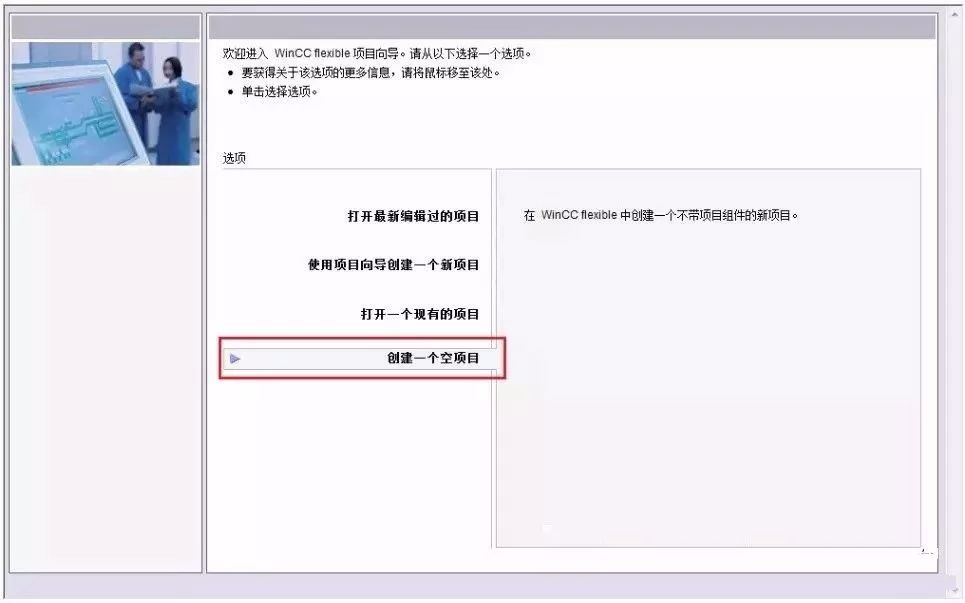
Figure 1. Create project directly

Figure 2. Device selection
Configure communication connection
The user can configure the Smart 1000 IE to communicate with the S7-200 SMART CPU's PPI through the following steps.
Step 1: In the main working window of WinCC flexible, expand the tree structure on the left, select "Project"> "Communication"> "Connection", double-click the "Connection" icon to open the "Connection Settings" property window As shown in Figure 3.
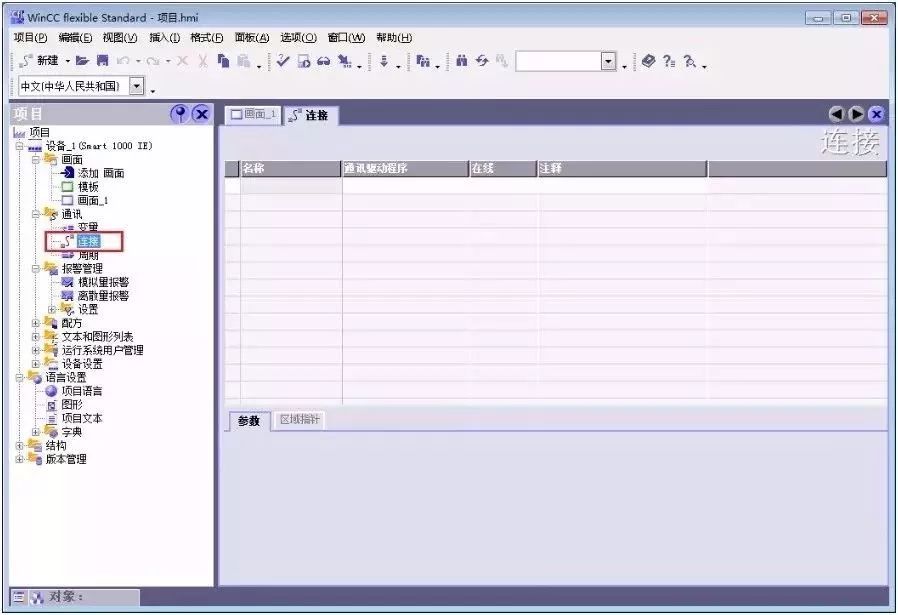
Figure 3. Open the connection window
Step 2: Double-click the blank table below the name in the "Connection" window, or right-click and select "Add Connection" in the shortcut menu to add a connection to the CPU. As shown in Figure 4.

Figure 4. Add connection
Step 3: After adding a connection, the user can modify the default connection name "connection_x" according to project requirements, and select "communication driver" and whether it is online. Since the connected device is an S7-200 SMART CPU, select "SIAMTIC S7 200 SMART" as the communication driver in the drop-down menu under "Communication Driver" and activate the online connection at the same time. As shown in Figure 5.
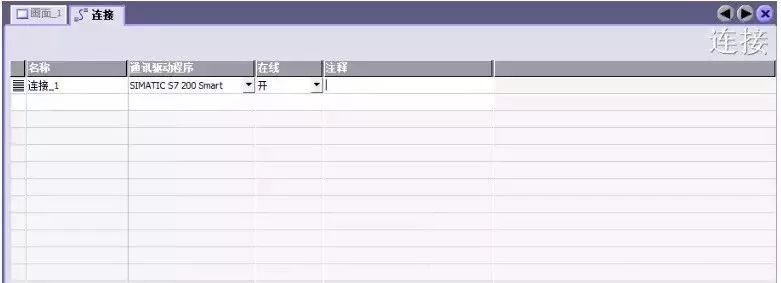
Figure 5. Configure the connection
Step 4: Set connection parameters. First select the interface of Smart 1000 IE as "IF1 B", which is the RS422 / 485 physical interface of the touch screen. After the interface is selected, the parameter setting window of the interface will be automatically displayed below it. Set the communication baud rate of the touch screen to 187500 and the station address to 1.
Then select "PPI" as the communication protocol between the two parties in the "Network" window.
Finally, set the station address of the CPU in the "PLC Device" window. Here, set the station address of the CPU to 2, as shown in Figure 5.
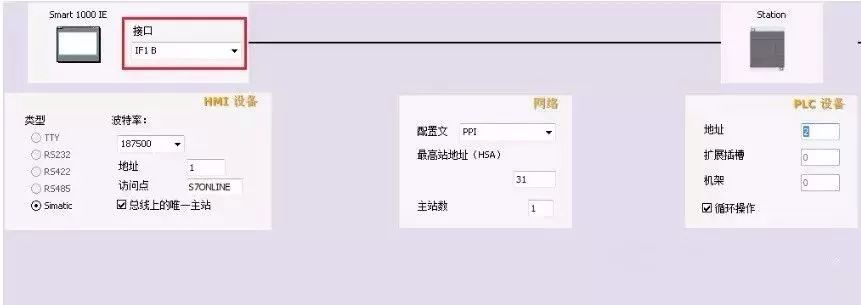
Figure 6. Connection parameter settings
Note: The address of the CPU must be different from the address of the HMI device, and the two cannot be repeated.
Step 5: Set the baud rate and station address of the S7-200 SMART CPU. Select "System Block" in the project tree of STEP 7 Micro / WIN SMART software, and then press the "Enter" key to open the "System Block" window shown in Figure 7. The station address and baud rate set for the RS485 port of the CPU must be consistent with the configuration in Figure 6, the station address of the CPU is 2, and the communication baud rate is 187.5 kbps.

Figure 7. S7-200 SMART communication port settings
So far, PPI communication between Smart 1000 IE and S7-200 SMART CPU has been completed.
Start operation screen
When you power on the Smart 1000 IE device, a splash screen will briefly appear on the screen, as shown in Figure 8. The meaning of the three buttons in the figure is as follows.
Transfer: The HMI device is set to "Transfer" mode.
Start: Start the project loaded on the HMI device.
Control Panel: Click this button to enter the control panel of the HMI device. The user can select the transmission mode and add a password on the control panel.
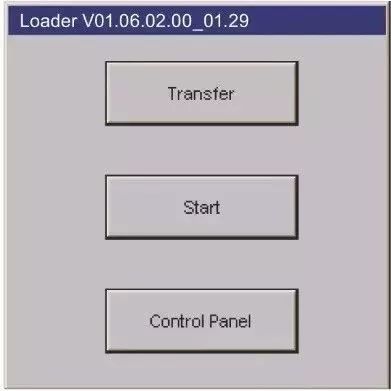
Figure 8. Start screen
Download project files
To download the configured project to the Smart 1000 IE device, first make sure that the communication port of the HMI device is activated, which can be set through "Control Panel"> "Transfer" of the HMI device, as shown in Figure 9. If you select the serial port to download the project, you first need to check "Enable Channel" to the right of "Serial".
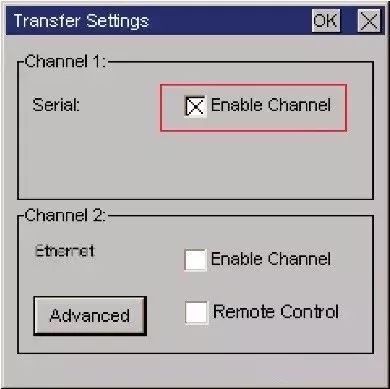
Figure 9. Communication port enable
Secondly, to download the project using the original Siemens PPI programming cable, RS-232 / PPI cable (order number 6ES7 901-3CB30-0XA0) and USB / PPI cable (order number 6ES7 901-3DB30-0XA0) are both acceptable. When the cable used is USB / PPI, the E-STAND version is required to be 05 or higher.
Then select "Project"> "Transfer"> "Transfer" in the menu bar of WinCC flexible software, as shown in Figure 10. Click "Transfer" to open the "Select Device to Transfer" window, as shown in Figure 11. In the "Select Device for Transmission" window, the user can select the transmission mode as "Serial" or "Serial Port (via USB-PPI cable)", and select the latter for transmission.
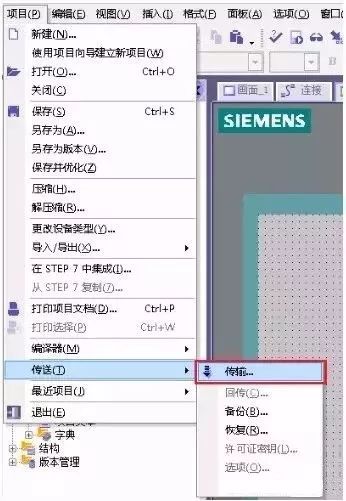
Figure 10. Open transfer settings

Figure 11. Transfer settings
After the Smart 1000 IE device is powered off and then powered on, the HMI device will display a startup screen. Click the Transfer button to put the HMI device in "Transfer" mode.
Then select "Project"> "Transfer"> "Transfer" in the WinCC flexible software, click the "Transfer" button in Figure 11 and wait for the transfer status in the HMI device to show "Transfer completed" The mode transfers the project to the HMI device.
Upholstery And Decoration Staple
Zhejiang Best Nail Industrial Co., Ltd. , https://www.beststaple.com